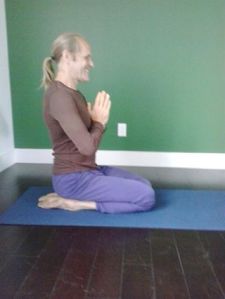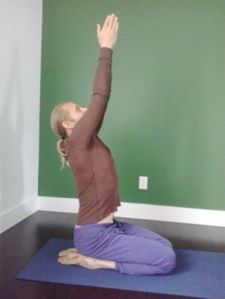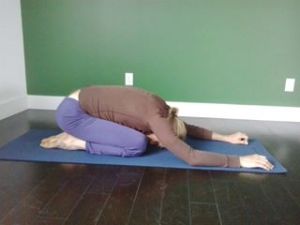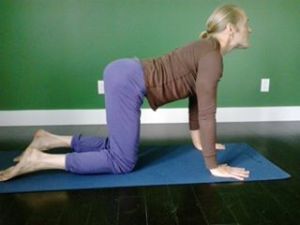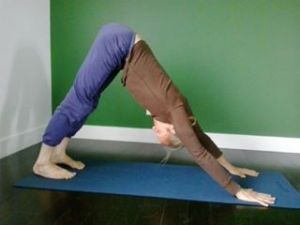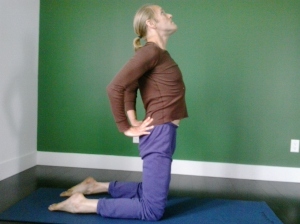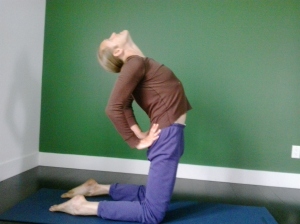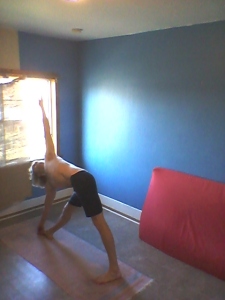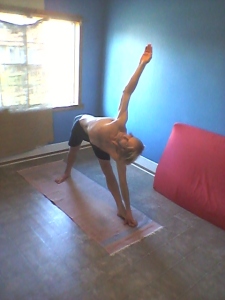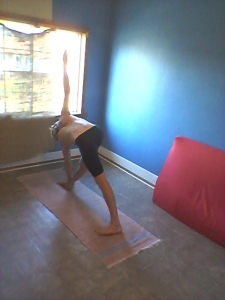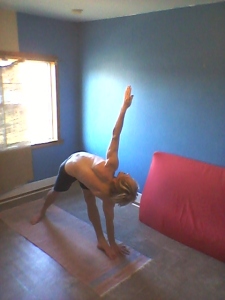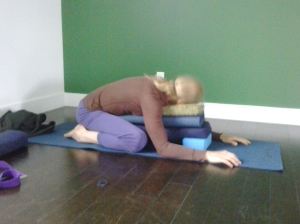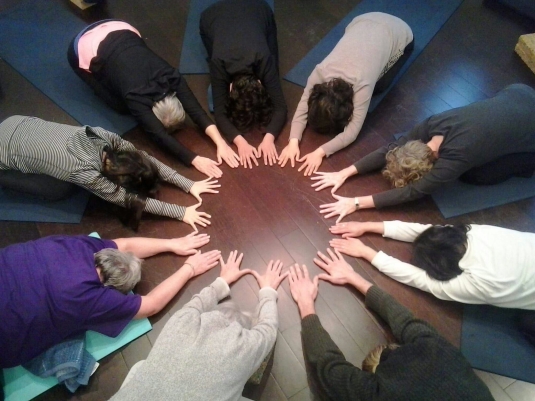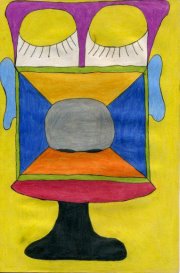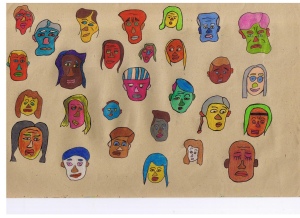Sharade
25 Nov 2017 Leave a comment
OnceasanaSaturday
18 Aug 2015 Leave a comment
in Ashtanga Vinyasa, yogasana Tags: asana, ashtanga yoga, primary series, Sun Salutation A, Surya Namaskar A
Onceasanasaturday
One Saturday and evening I took photos of several not all, of the asana of The Ashtanga Primary Series. This was is in a rented room in a house in East Vancouver.
They were taken with a smart phone with a camera and timer. I set the camera in a frame of thumbtacks in the corner of the closet door jam.
Set the timer to a full 10 seconds and raced to the mat and into each asana…
Here is the gallery.
https://flic.kr/s/aHsjHoFJ2v
Utthita Trikonasana/Parivrtta Trikonasana
22 Oct 2014 Leave a comment
These are two of the most basic standing asana one will learn when beginning a Hatha Yoga or Ashtanga Yoga training.
These variations are those used in the Ashtanga Vinyasa system. This is characterized by a shorter stance and grabbing the big toe with the circle made by the thumb and “peace” fingers of the hand reaching towards the foot. In other styles one may be asked to place the hand outside the
ankle on the floor with a longer stance ( i.e. distance between the feet).
I like to think of the asana in the same way as a mudra functions, creating a by-pass circuit of energy by making a sealed unit with the body. The body then becomes a mantra with the breath as the force for chanting. The shape of the asana creates a resonance that makes a seal or ‘impression” on the physical and “energetic” body of the practitioner.
Restorative Yoga
29 Sep 2014 Leave a comment
“Restorative Yoga is a therapeutic yoga style using props ( bolsters, blankets, cushions, straps and blocks) to fully support the body while remaining for a long time in a diverse range of postures. With a natutal release of effort, awareness of the breath facilitates a softening of the body and a letting-go of tension and accumulated stress. Experience and develop benficial methods to alleviate the effects of circulatory and digestive fatigue, nervous system overload, mental and emotional stress and restore the healthy joy and vitality to your body, mind and spirit!.”
Above is a photo of child’s pose, fully supported with my head turned left. Because of my long arms, I can reach the floor easily. Some may need extra support ( blanket, cushion under the forearms and hands). As one remains in postures for a long time, supporting the body fully in a comfortable position is recommended. Often, after even several cycles of breathing, the body may sink deeper into the asana. Without support there, the muscles maybe contracted instinctively to hold the posture, slightly bringing tension and discomfort.
“Tamaso ma jyotirgamayah”
28 Nov 2013 Leave a comment
“Tamaso ma jyotirgamayah” means “lead from darkness to light”
The video is of a morning self practice session where I attempt the vinyasa of the Intermediate Series or Nadi Soddhana not to be confused with the pranayama technique of alternate nostril breathing. The process and desired purpose is still similiar, for with the intensity of backbends, arms balances, leg behind the head postures and seven headstands at the end, rebalancing and a unblocking of energy currents or nadis in the subtle body or suksma shahira appears.
My squat in Pasasana and my backbending are slowly developing but the upper body and shoulders go through a process of realignment, and extreme expansion, spiralling and concentration. The leg behind the head poses require an immense core strength and yet revitalize and restrengthen the core after the backbends. Arm balances like crow and Pincha Mayurasana, Karandavasana, Mayurasana and Makrasana are intensified more than in most practices outside the Ashtanga flow. The action and strength of ujjayi reveals it’s wonder in bandha and chakra dowsing ,activating and directing.
For me as I practice everyday I try to find a rythym between the breath and movement and my familiarity with vinyasa sequence and asana. The release of clarity and wholeness that has followed many of these recent Nadi Sodhana Sadhana has often revealed impurities and created a disgust with the objects of sense and an irritation to moments of sensational expiriences in my daily life. Smells, tastes, sights, sounds and even proximal relationships in space reveal a wavering of transcendent equanimity and repulsive discrimination.
When purifying something the impuries often appear and occlude the awareness of the prescence of healing ….
Because the video is long and quite monotonous for some to view I will highlight some of the scenes.
The first 40 minutes were practiced in the darkness with faint lighting and a soundscape of awakening crows and the first skytrains of the morn.
At:
At 40:00 minutes I am into backbending and from the two “Bakasana” (Crane or Crow posture depending on traditions) I recline in a bound lotus posture for Supta Vajrasana or Sleeping Thunderbolt Seat… the Thunderbolt of Indra…
The dark blue light and sounds electric and menacing meet dawn at:
43:29… I drop back into the posture as the crepescule brings me into it’s healing light.
Crepescule is the twilight of dawn or dusk where the sun’s scaterred rays emit from 18 deg. or more below the horizon…
“Oh sweet light take away the pallor that is unhealthy to my heart and mind”
“Hrdrogyam mamasurya harimanam ca nasaya” Rg Veda
Yoga Teacher Training in Seoul
27 Nov 2013 Leave a comment
My Yoga Teacher Training took place in South Korea. It was a one year course at the Korean Yoga Cultural Centre in Seoul yogamind. I trained daily, …the yoga practice was primarily hatha, zen and restorative …the main text was my teacher’s analysis and practical application of several traditions, both eastern and western. This was a mix and exchange of his unique heritage and that of India using Hatha yoga posture with both zen and yogic breathing practices with subtle body work in both yogic paradigms and Han dynasty traditional medical and philosophical processes and functions.
The physical training included two daily hour(or more) practices, regular weekly study group for asana for the which the main text was BKS Iyengar’s Yoga Dipika (I studied both the English and Korean translations) and supplemented by his own text and research presented from individual students. Each week we were each given two or three asana, pranayama, mudra, bandha practices and asked to demonstrate and teach variations or sequences for self-development classes, study and practice groups with other yoga teachers and teacher trainees. Our particular class also rehearsed and performed a dance fusion of yoga ballet that was choreographed by national level ballet performers, teachers.
We had a three hour lecture every Saturday with other options for extra practice attending workshops or doing karma work at the studio
We also did a lot of walking which my teacher taught with vigor both as meditation, exercise and as transportation and exploration.
The final exams followed months of uninterrupted study, attendance and focus.
It consisted of two parts :
1.A written test with exam questions on basic yoga
theory and practice
2. a physical demonstration of asana, Surya Namaskar/Variations, Basic Hatha Yoga asana, pranayama, mudra, bhanda and a stamina test including: shat kriyas, 1 hour padmasana still breath meditation, bhanda locks and pranayama breathing and sequences
I was in the Korean Yoga Cultural Centre’s 11th teacher training class… now they have taught several times more than that…
My asana teachers and theory teachers were mostly female and all the teachers were Korean and taught exclusively in Korean. Consequently, I also studied Korean with several friends along with my yoga study and practice in order to attend lectures, read and study texts, and communicate verbally and through writings.
As much as I am grateful for this opportunity and unique experience I realized after traveling to India and returning to Canada that I have a sincere passion for yoga. Sometimes I feel there is discrimination and bias because of ignorance or staining of the true limitless essence of yoga. I was surprised to see my own ignorance revealed when I found a that yoga had been a part of this culture a long time and it’s influences showed in many variations of physical and meditative practices and philosophies. I also became exposed to many styles of practices influenced from Western, Indian and Korean backgrounds in Seoul.
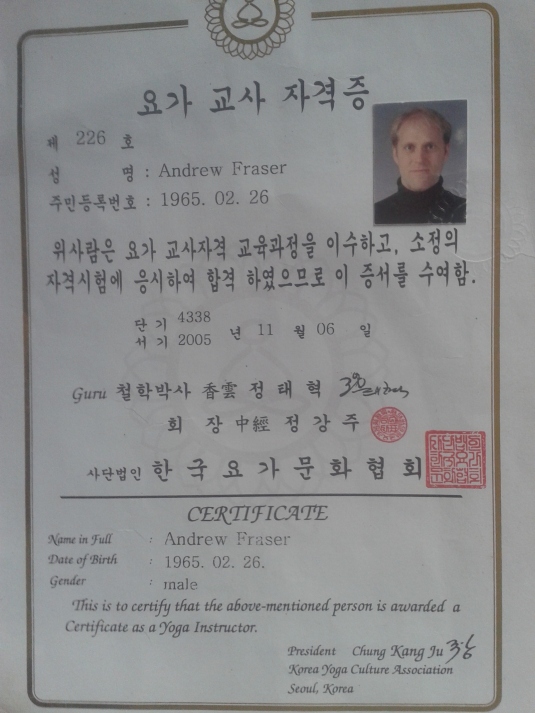
Breathshare
19 Jul 2013 Leave a comment
in Uncategorized Tags: breath meditation, breathing, non-violence, padmasana, peace, yoga, yoga mat, yoga practise
breathshare
The name breathshare
signifies a connection with all beings that breathe in some way. Plants, animals (human and non-human)…
Breathshare
doesn’t have a curriculum or agenda for peace or the end of suffering by any method of austere, academic or devotional orientation. Not even just a sign for those who reflect even for a second, it only suggests a matrix of hopefulness that exists as present as any darkness around us.
The cartoon image of meditation is not intended to be cynical, mocking, patronizing, sarcastic or deluding. Observing the breath is simple and difficult but it also brings lightness and stability. The image is imbalanced, awkward, asymmetrical and primarily infantile. It is also fun, colorful, serene and happy.
Personally, it is a presentation of the lessening fear of showing that I have some aspiration to peace, non-violence, honesty, courage, love and a faith with-in from which there is an attempt to express those qualities to others.
Almost sixteen years ago I began sitting cross-legged and observing or at least trying to observe my breath through the nostrils and the movements of the body connected with the course of the breath. Along with readings and teachings from many monks, yoga teachers, doctors, counselors, teachers, activists, social workers, healers, priests, native elders, spiritual teachers, friends, co-workers, and family etc, the common connection to breathing that we share became a strong, viable truth. Now I try to bring awareness to breathing in day-to-day activities i.e. cleaning, cooking, walking, standing, waiting and communicating. It doesn’t always work and I have a lot of practicing to do. It helps to bring clarity to my mind so that I can see clearly before me where I am and make choices that won’t create more trouble for myself.
I like gatherings where people connect by joining hands or doing yogasana or performing some symbolic act simultaneously with others around the world. Perhaps one day we can all sit down at a given time on our “mat”… this earth… and just breathe 10 breaths or so together. Isn’t it time we had a breather?
http://www.youtube.com/watch?v=owFjEh6xxEA
We do breathe together and it is this breath which slows us down and makes us take notice as well:
…the others in our life and their connection to this breathing tapestry of nature…
Aum Likhita Japa
02 Jul 2013 1 Comment
in Uncategorized Tags: AUM, Likhita-Japa, mantra, patanjali, yoga, Yoga Sutra
Aum is mentioned in the Yoga Sutras of Patanjali first at
1.27. “tasya vacakah pranavah” ” the expression of that(ishvara) is Aum or pranava”
Likhita Japa is a form of mantra recitation (japa) that can be written out repeatedly on paper, metal, cloth or other materials. Since most malas (garland or rosary) used for counting during mantra japa saddhana contain 108 beads I have chosen 108 times to write out the symbol AUM.
ashtanga intro workshop
29 Jun 2013 Leave a comment
in Uncategorized Tags: ashtanga, ashtanga workshop, ashtanga yoga, astanga, yoga workshop
ashtanga intro workshop, a photo by breathshare on Flickr.
In 2007 fall, I taught an intro 2 hour Ashtanga Vinyasa workshop in Seoul to help students prepare for Authorized Teacher James Butkevitch’s (AshtangaYogala) weeklong Ashtanga Workshop


